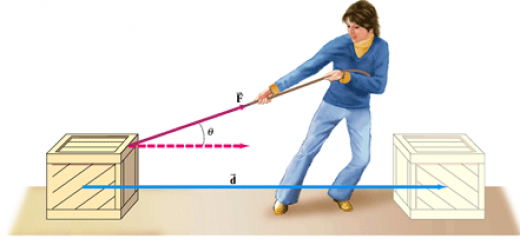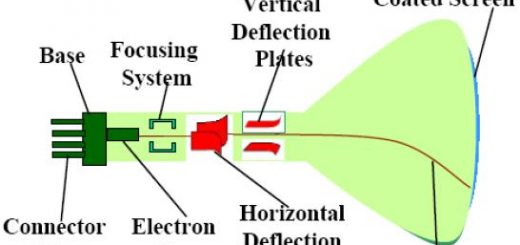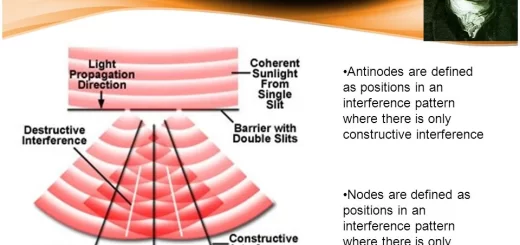Law of wave propagation, Properties of electromagnetic and mechanical waves
Water waves are transverse mechanical waves, they are transverse because the medium particles vibrate perpendicular to the direction of the wave propagation forming crests and troughs, and mechanical because they need a medium to propagate through.
Electromagnetic and mechanical waves
Electromagnetic waves are waves that do not need a medium to propagate where they propagate through vacuum. They are all transverse waves, such as visible light waves, infrared waves, and Radio waves (used in radars).
Mechanical waves are waves that need a medium to propagate, where they do not propagate through vacuum. They may be Transverse waves such as water waves or Longitudinal waves such as sound waves.
Astronauts use wireless devices to talk to each other on the Moon surface because the sound is mechanical waves that can’t propagate through vacuum, while the wireless device works with light which can propagate through vacuum.
Velocity of propagation
The electromagnetic waves propagate by a velocity = 3 × 108 m/sec, in vacuum but their velocity decreases when they transfer in media, Radio waves are transverse electromagnetic waves. they are transverse because the particles of the medium vibrate perpendicular to the direction of wave propagation forming crests and troghs and electromagnetic because they propagate through vacuum.
Mechanical waves propagate with a velocity that is much less than the velocity of electromagnetic waves in media, Sound waves are longitudinal mechanical waves. They are longitudinal because the particles of the medium vibrate along the direction of wave propagation forming compressions and rarefactions and mechanical because they need a medium to propagate through.
Hearing thunder after seeing lightning although they both happen at the same time, because the light of lightning is electromagnetic waves, while the sound of thunder is mechanical waves, where the velocity of propagation of electromagnetic waves is much greater than the velocity of propagation of mechanical waves in air.
We can’t hear the sound of solar explosions, but we can see the light coming out of them because the sound is mechanical waves, which can’t propagate through a vacuum between the Sun and the Earth, while the light is electromagnetic waves, which can propagate through a vacuum.
Electromagnetic waves are a type of transverse waves that can propagate in free space. They consist of an electric field and a magnetic field perpendicular to each other and to the direction of wave propagation.
The guard dogs sleep with one of their ears on the floor because the velocity of sound through solids (floor) is greater than its velocity through air, this enables them to hear the sound faster.
Some concepts related to wave motion and its properties
- Wavelength
- Wave amplitude
- Wave velocity
- Wave frequency
Wavelength (λ)
The wavelength (λ) of the transverse wave is the distance between two successive crests or troughs. The wavelength (λ) of the longitudinal wave is the distance between the centres of two successive compressions or rarefactions. The measuring unit of wavelength (λ) is “metre”
Laws used for determining the wavelength:
- The wavelength of a transverse wave = 2 × the horizontal distance between the successive crest and trough.
- The wavelength of a longitudinal wave = 2 × the distance between the centres of successive compression and rarefaction.
- Wavelength = the distance covered by waves/ Number of waves.
Wave amplitude
Wave amplitude is the maximum displacement achieved by the medium particles away from their rest positions, The measuring unit of wave amplitude is “metre”.
The vertical distance between the crest and the trough of a wave = 2 × Wave amplitude
Wave amplitude = The vertical distance between the crest and the trough of a wave/ 2
When the amplitude of a mechanical wave is 3 cm, this means that the maximum displacement achieved by the medium particles away from their rest positions in such wave is 3 cm (0.03m).
Wave velocity (V)
The velocity of the transfer of the energy carried by the wave is represented by wave velocity. Wave velocity is the distance covered by the wave in one second. The measuring unit of wave velocity is “metre per second (m/s)”.
Wave velocity = distance covered by the wave in metres (m)/ time in seconds (s)
Wave velocity is constant through the same medium but it changes from one medium to another as follows:
- The velocity of sound waves through air = 340 m/s.
- The velocity of sound waves through water = 1500 m/s.
- The velocity of sound waves through water = 1850 m/s.
The velocity of sound through solids > the velocity of sound through liquids > the velocity of sound through gases (air).
When the sound waves transfer from air to water, The velocity of sound waves will increase. When the distance which is covered by a wave in water through one minute = 9 × 104, This means that the wave velocity = 1500 m/s which can be calculated by the following law: V = 9 × 104/60 = 1500 m/s.
Wave frequency (F)
Wave frequency is the number of complete waves produced from the sources in one second. The measuring unit of frequency is “Hertz”. The periodic time of the wave is the time taken to make one wave.
Wave frequency = Number of complete waves/ time in seconds (s).
Periodic time of the wave (T) = 1/ Frequency (F).
As the frequency of the wave in the same medium increases, its wavelength decreases because the velocity of the wave is constant in the same medium, therefore the frequency of the wave is inversely proportional to its wavelength.
The tide waves which are known as Tsunami waves have wavelength = 200 km, Amplitude = 30 m, and move with a velocity = 800 km/hour.
A glass cup is shattered when its natural frequency is equivalent to the frequency of a nearby sound source, as the amplitude of the oscillation of the cup particles becomes too large. This phenomenon is known as Resonance.
Law of wave propagation
It is the relation between the wave velocity (V), its frequency (F), and its wavelength (λ).
The distance covered by the wave in one second = Number of complete waves in one second × The length of a complete wave
Therefore, Wave velocity (V) = Frequency (F) × Wavelength (λ)
This relation is known as the law of wave propagation and it can be applied for all types of waves.
The wave velocity of light and radio waves is the same although their frequencies are different because both of them are electromagnetic waves that have the same velocity in vacuum, so, the multiplying of frequency and wavelength of each of them = constant value= 3 × 108 m/s.
Oscillatory Motion definition, examples, applications & properties
Role of waves in transferring energy, Wave Motion, Transverse waves & Longitudinal waves
Types of motion, Relative motion, Applications of Mechanical waves & Electromagnetic waves
Laws of circular motion (Centripetal Acceleration, Tangential linear Velocity & Centripetal Force)



